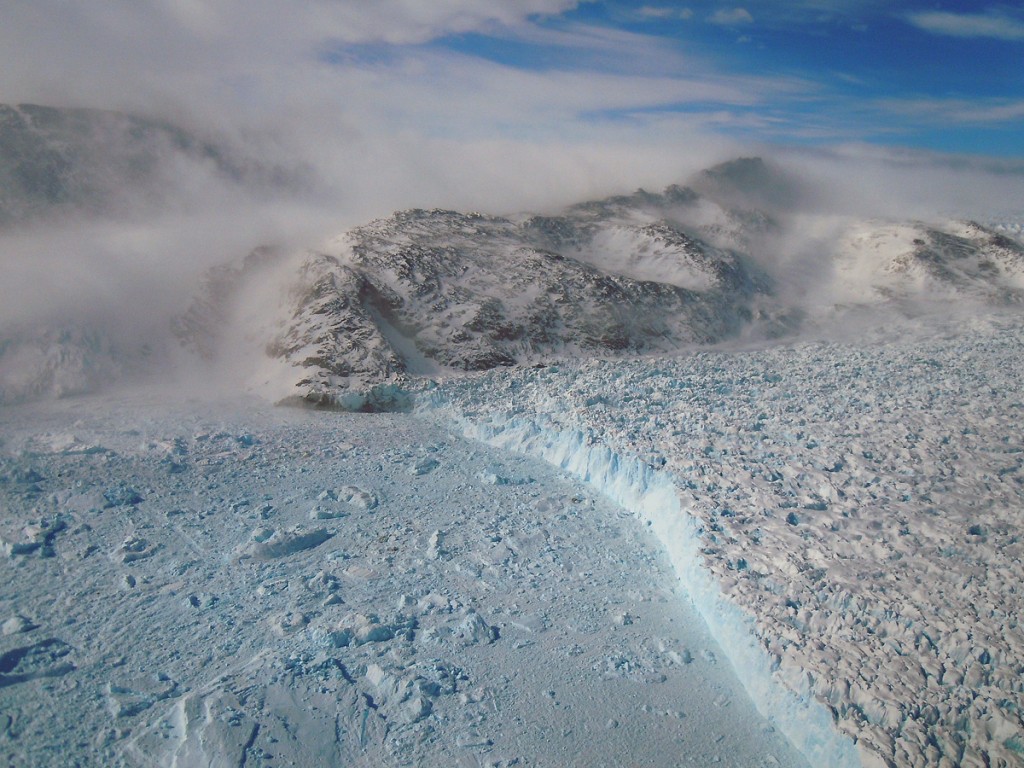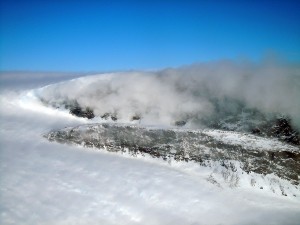From Michael (NASA) Greenland ice sheet, 11 April
On April 11, NASA’s IceBridge campaign finally got the clear weather necessary to fly over glaciers in southeast Greenland. Typically, this area is shrouded in cloud, but strong winds from the Greenland ice sheet can clear the cloud – but these winds and the rugged coastal topography cause a lot of air turbulence. So, with clear skies came winds of up to 70 knots, which made for a bumpy ride over the calving front of glaciers such as Gyldenlove seen here.
Despite the difficult conditions we were able to survey all planned glaciers in the cloud-free area south of 65N. The amount of windblown snow was extreme and often reduced visibility for flight operations. Today’s data will be a good dataset to evaluate the potential impact of windblown snow for ICESat-2 laser altimeter measurements.
NASA’s IceBridge, is an airborne campaign to monitor polar ice. As part of their campaign, NASA is taking part in joint flights with ESA planes, overflights of European ground sites and underflights of CryoSat.
By cooperating in collecting a huge and varied airborne dataset a better understanding of the data from ESA’s CryoSat and NASA’s ICESat missions will be achieved.
Post adapted from Michael Studinger’s 11 April Operation IceBridge flight report.










Discussion: one comment
Thank you..really informative!!